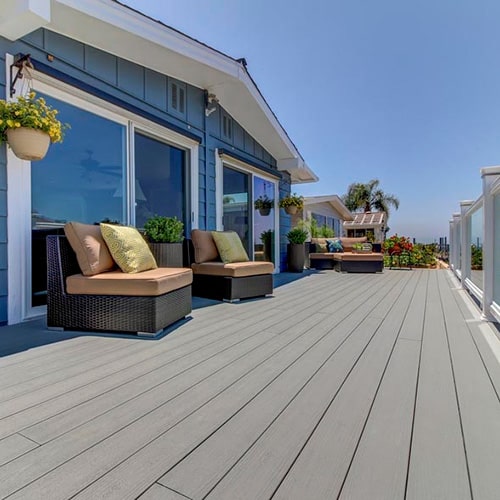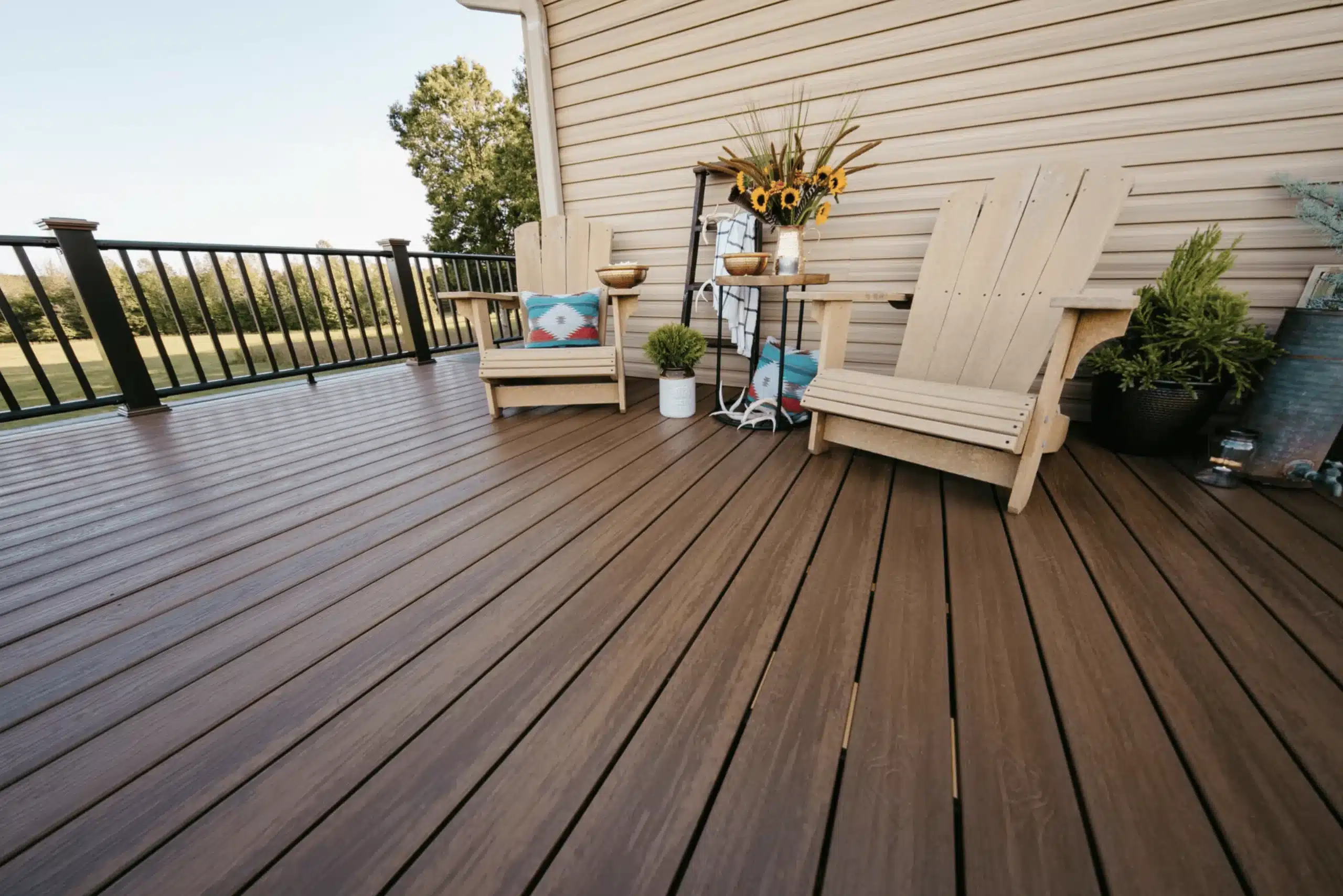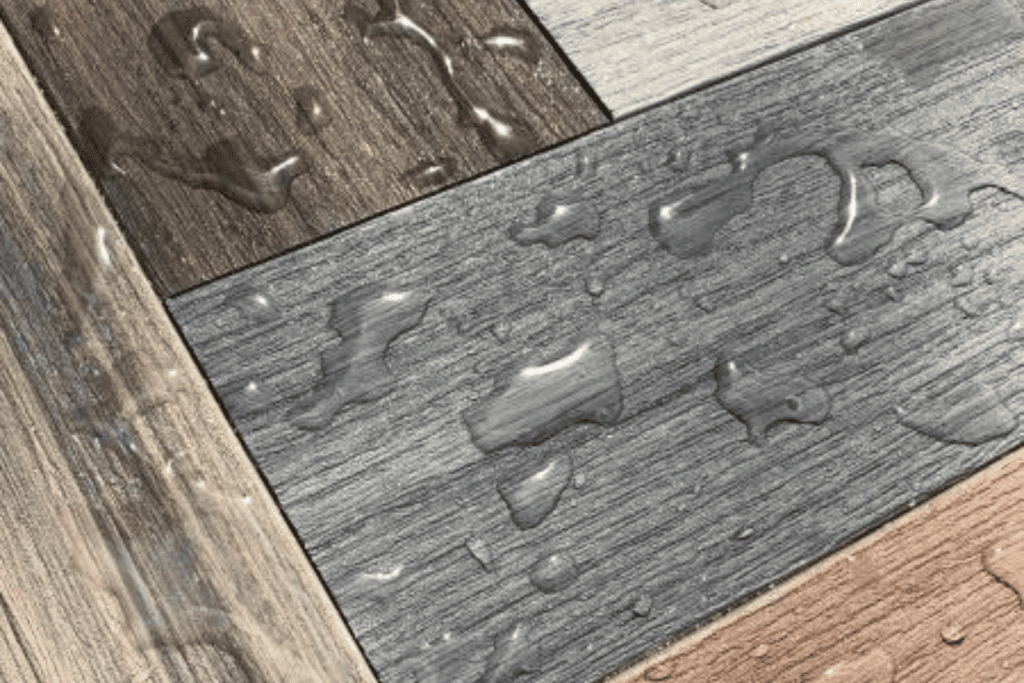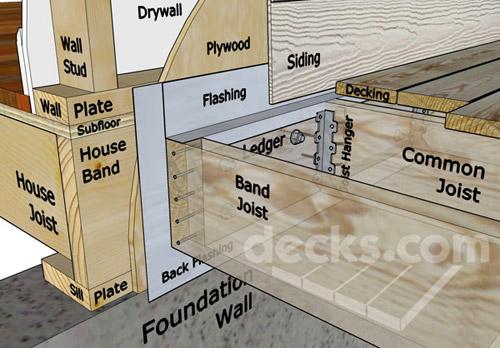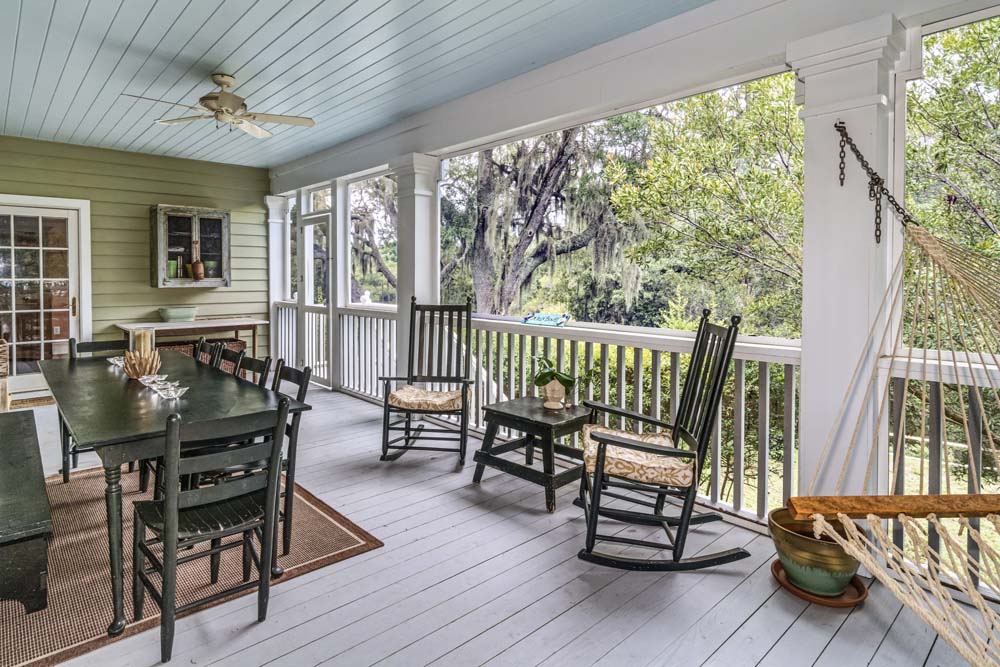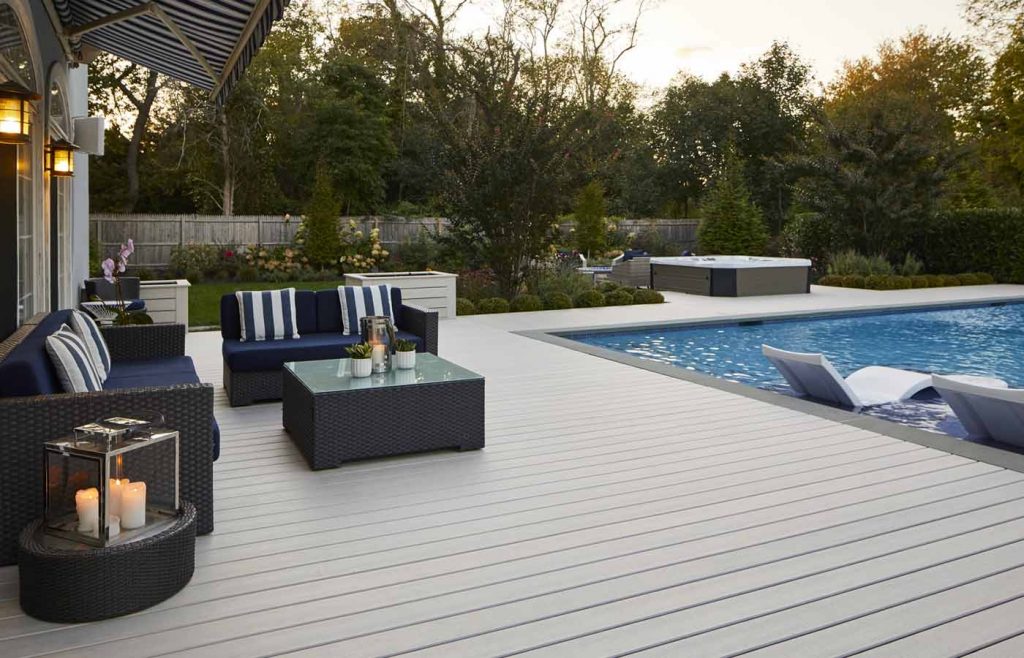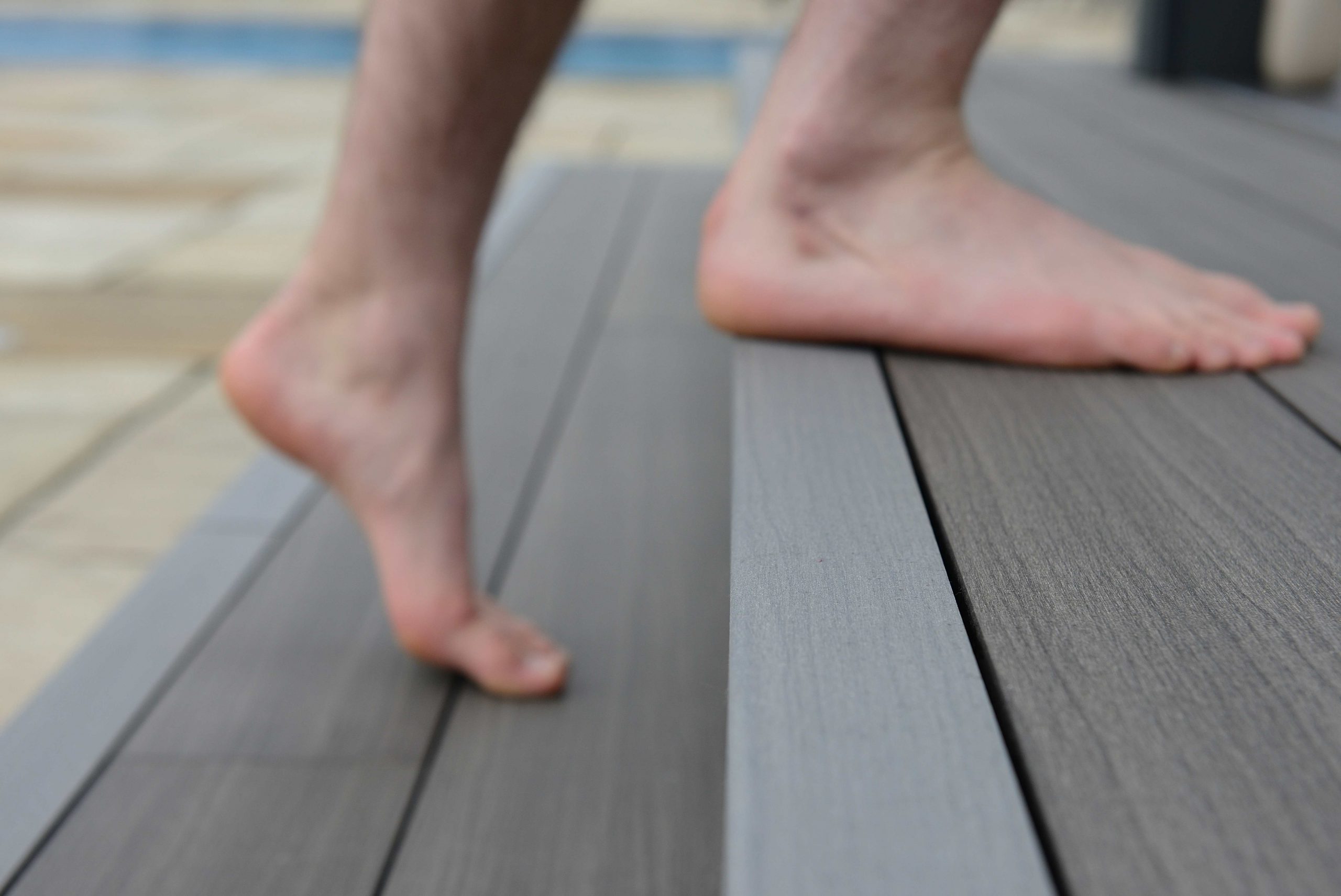Better Looking Composite Decks, Without Staggering Decking
Staggering decking has always been the industry standard for wood decking for many years. There are many different reasons why you would want to stagger wood decking. one reason people stagger wood deck boards are for decks larger than you can get the deck board lengths in. Wood decking also isn’t subject to the same amount of thermal movement as composite. By staggering the decking, they can blend the seams in the decking throughout the deck making it appear to be more uniform.
Staggering decking on wood decks also played a role in the structural integrity of the deck itself. By spreading the seams throughout it spreads any weak point and allows the deck to more or less lock together creating a singular structure. If you ever look at the way plywood is installed on a roof or the wall of a house, you will notice the seams never line up. This is because the plywood is being used to add integrity to the structure.

This method works well with wood decks like plywood on a house because of the way it is fastened down. when it comes to composite decks, you are more than likely using a hidden fastener which doesn’t hold down the board in a structural manor like the way two screws through the face of a deck board does. For this reason, we must change the way we frame for a composite deck factoring in there is no sway or structural integrity to composite decking.
Understanding why wood decks have seams and why there is no benefit structurally to staggering composite decking you can now see why we don’t recommend staggered composite decking on our decks. You will continue to read a few reasons we find it is best not to stagger composite decking.
Safety hazard
Lippage or buckling is caused when two deck boards that butt into each other expand and there isn’t enough space for the movement. Composite like most everything else does expand and contract as temperature and moisture changes throughout the season. When this happens, you will often see one or both boards start to pop up on the ends. This can pose a potential trip hazard when walking across the deck. I know a lot of people often enjoy their decks bare foot and stubbing your toe on one of these does not feel the greatest or even tripping over one and falling.

Aesthetically Unpleasant
Not only can these seams be dangerous, but they are just unpleasant to look at. Imagine having dozens of these seems across a large deck. Instead of having a nice flat deck, every few feet and every board has a seam that popped up when the deck expands. That doesn’t sound like it would be a very aesthetically pleasant looking deck. By adding a breaker board instead, it gives a cleaner appearance. Even through the extreme conditions our decks face they will always look flat and smooth like the day they were installed. This is a big reason why it is important in knowing how your deck will be built.

Design
A breaker board is a board that run horizontally to the rest of the decking to give a smooth transition between different lengths of decking for large decks that are bigger than the length of decking is available in. Breaker board allows the hole deck to expand and contract as needed with out any lifting or buckling. The framing of the breaker board also plays a important role in allowing enough room for the decking to move without buckling or potentially falling off the joist entirely. Yes, we have seen deck board contract enough to fall off a single joist. This happens when you have two boards landing on a single joist only being 1 1/2″ thick. Both deck boards will expand and contract as much as 3/8 of a inch, that doesn’t leave much room for both deck boards to share a single joist.
Breaker boards also give you a great opportunity to add a design of contrasting color to your deck. Something as small as adding a accent color to your breaker boards can change the entire design of the deck. This is not necessary, as you can have all matching but definitely adds texture to your deck.

Expansion and Contraction
Composite like all materials we use for just about everything is subject to expansion and contraction as it is exposed to different elements. There are a few different types of composites out there and each one is affected differently depending on the type and concentration of the materials used during the manufacturing process. Some composites such as Mineral Based Composite decking has very little thermal movement. Whereas a PVC type of composite has a lot of thermal movement from morning to afternoon. Ultimately the expansion and contraction of the materials shouldn’t play a large role in considering the type of decking you want. It plays a much bigger role on picking a company that knows and understand the difference between these different types of composites and install it accordingly to ensure the best results for your finished project.
https://www.google.com/maps?cid=2300364325239903716



